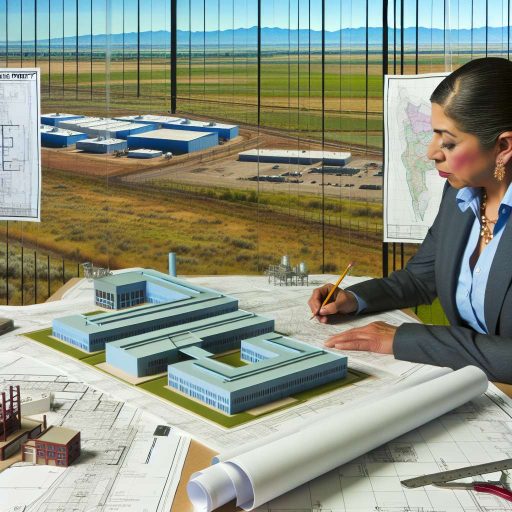The Rise of E-Commerce and Its Impact on Industrial Real Estate
Growth of E-Commerce
The e-commerce industry has experienced remarkable growth over the last decade.
With increasing internet accessibility, more consumers embrace online shopping.
This shift significantly affects the demand for industrial real estate.
Retailers need more distribution centers to support fast delivery systems.
As a result, logistics facilities are becoming more crucial for operations.
Demand for Warehousing Space
The surge in e-commerce directly drives demand for warehousing space.
Many retailers require larger warehouses to store diverse inventory.
These spaces often need to be strategically located near urban centers.
Proximity to customers enhances delivery efficiency and reduces costs.
Consequently, industrial real estate in key markets is becoming scarce.
Innovations in Logistics and Technology
E-commerce growth triggers advancements in logistics and technology.
Automation in warehouses streamlines operations and cuts labor costs.
For instance, robotic systems are increasingly managing inventory and fulfillment.
Additionally, data analytics helps optimize supply chain management.
Investors should consider tech-enabled facilities as valuable assets.
Transform Your Real Estate Decisions
Unlock personalized real estate insights crafted just for you. Get actionable advice designed to amplify your success.
Get StartedRental Rate Increases
As demand for industrial spaces rises, rental rates are following suit.
Investors are adapting to this trend by adjusting pricing strategies.
Higher rents attract more developers to the industrial sector.
This can lead to increased competition among investors and tenants.
Moreover, favorable leasing terms can benefit both landlords and tenants.
Environmental Considerations
Sustainability is becoming a priority in industrial real estate investments.
Many companies aim to reduce their carbon footprint through green initiatives.
Investors are seeing value in properties designed with sustainable features.
Energy-efficient buildings can reduce operating costs over time.
This focus on sustainability is shaping future industrial developments.
Sustainability Trends in Industrial Properties
Green Building Practices
Sustainability has become a priority for industrial real estate investors.
Green building practices offer numerous benefits.
These practices reduce energy consumption significantly.
Moreover, they lower operational costs for property owners.
Showcase Your Real Estate Business
Publish your company profile on our blog for just $200. Gain instant exposure and connect with a dedicated audience of real estate professionals and enthusiasts.
Publish Your ProfileInvestors are increasingly seeking LEED-certified properties.
These buildings can garner higher rental rates and occupancy levels.
Additionally, they attract environmentally-conscious tenants.
Energy Efficiency Initiatives
Energy efficiency is at the forefront of green building trends.
Many industrial properties now incorporate advanced insulation.
This enhancement minimizes heating and cooling costs.
Furthermore, solar panels are becoming commonplace.
They allow properties to generate their own electricity.
Consequently, owners can reduce their reliance on grid energy.
Investors also benefit from tax incentives for renewable energy.
Sustainable Materials and Construction Techniques
Using sustainable materials is another growing trend.
Investors now prefer recycled and locally sourced materials.
These choices lower construction impacts on the environment.
Moreover, advanced construction techniques minimize waste.
Prefabrication and modular building methods are gaining popularity.
These methods streamline the construction process and reduce costs.
Water Conservation Strategies
Water conservation has become crucial in industrial properties.
Many facilities invest in rainwater harvesting systems.
This system captures and stores rainwater for reuse.
Additionally, low-flow fixtures help reduce water consumption.
Landscaping with drought-resistant plants is also recommended.
Such initiatives support sustainable water management practices.
Regulatory Compliance and Incentives
Regulatory frameworks are evolving to support sustainability.
Many regions enforce stricter environmental regulations.
Property owners must comply to avoid penalties.
On the other hand, compliance can unlock potential incentives.
Tax breaks or grants can assist in financing green upgrades.
Investors should closely monitor regulatory changes.
This vigilance helps capitalize on available opportunities.
The Influence of Supply Chain Changes on Warehouse Demand
Adapting to E-commerce Growth
Online shopping continues to rise exponentially.
Showcase Your Real Estate Business
Publish your company profile on our blog for just $200. Gain instant exposure and connect with a dedicated audience of real estate professionals and enthusiasts.
Publish Your ProfileThis surge drives increased demand for warehouses.
Companies like Amazon are expanding their fulfillment centers.
They need to store more products closer to the consumer.
Investors should consider locations near major urban centers.
Impact of Global Supply Chain Disruptions
Recent global disruptions have reshaped supply chains.
Manufacturers seek to shorten supply chains to reduce costs.
This shift increases the need for domestic warehouses.
Local storage solutions can mitigate shipping delays.
Investors must be proactive in identifying emerging markets.
Sustainability in Warehouse Design
Green building practices are gaining traction in real estate.
Investors must prioritize sustainable warehouse developments.
Features like solar panels and energy-efficient lighting attract tenants.
Many brands prefer eco-friendly warehouses to enhance their image.
As a result, sustainability can drive higher returns on investment.
Technological Integration
Warehouses are increasingly adopting automation technologies.
Robotic systems improve efficiency in inventory management.
Investors should consider properties with integrated tech solutions.
Real-time data analytics can enhance operational efficiencies.
These innovations are essential for staying competitive in the market.
The Rise of Last-Mile Delivery Facilities
Last-mile delivery logistics are becoming crucial in real estate.
These facilities reduce delivery times for online orders.
Urban areas are seeing a surge in demand for such spaces.
Investing in strategically located last-mile facilities is wise.
They support the ongoing shift towards faster delivery services.
Find Out More: Factors Affecting Industrial Real Estate Values Across The USA
Technology Integration: Automation and Smart Warehousing
The Rise of Automation
Automation is transforming industrial real estate.
Companies increasingly adopt robotics in their warehouses.
This shift boosts efficiency and reduces labor costs.
Many businesses now rely on automated sorting and packaging.
Furthermore, automation enables faster order fulfillment.
Showcase Your Real Estate Business
Publish your company profile on our blog for just $200. Gain instant exposure and connect with a dedicated audience of real estate professionals and enthusiasts.
Publish Your ProfileSmart Warehousing Solutions
Smart warehousing involves advanced technology integration.
These systems utilize the Internet of Things (IoT) for better tracking.
IoT devices monitor inventory levels in real time.
Additionally, they improve supply chain visibility significantly.
Cloud-based management software enhances operational efficiency.
Benefits of Technology Integration
Using technology in industrial spaces presents numerous advantages.
- Increased operational efficiency leads to higher productivity.
- Real-time data analytics provide actionable insights.
- Enhanced accuracy minimizes inventory errors.
- Lower labor costs improve overall profit margins.
Challenges to Overcome
Despite the benefits, some challenges persist.
Initial investment costs can be prohibitive for smaller companies.
Additionally, staff may require training to adapt to new systems.
Cybersecurity threats also pose risks to technology integration.
Companies must prioritize security protocols to protect data.
The Future of Industrial Real Estate
The future of industrial real estate looks promising.
We can expect further advancements in technology adoption.
Companies will increasingly focus on sustainability alongside automation.
Investors should keep an eye on emerging technologies.
Ultimately, embracing innovation will be key to success.
Gain More Insights: Securing Long-Term Leases In Competitive Commercial Office Space Markets
Shift towards Last-Mile Delivery Facilities and Urban Warehousing
Growth in E-commerce Demand
The surge in e-commerce has transformed logistics requirements.
Consumers expect faster delivery times than ever before.
This demand has driven the need for last-mile delivery facilities.
Urban warehousing offers strategic locations for quicker dispatch.
As a result, investors are focusing on properties near densely populated areas.
Benefits of Last-Mile Delivery Facilities
These facilities ensure products reach consumers efficiently.
They reduce transportation costs significantly for businesses.
Moreover, they minimize carbon footprints through local deliveries.
Investors find value in properties that facilitate these operations.
Urban Warehousing Trends
Urban areas are evolving to accommodate new warehousing solutions.
Developers now seek to repurpose old warehouses into modern facilities.
This trend supports sustainable development and revitalizes communities.
Additionally, proximity to transportation hubs enhances accessibility.
Showcase Your Real Estate Business
Publish your company profile on our blog for just $200. Gain instant exposure and connect with a dedicated audience of real estate professionals and enthusiasts.
Publish Your ProfileRegulatory Changes and Opportunities
Changing regulations are impacting urban logistics strategies.
Cities are increasingly recognizing the importance of last-mile solutions.
This acknowledgment opens doors for innovative projects.
Investors must stay informed about local zoning laws and incentives.
Investment Strategies for Last-Mile Delivery and Urban Warehousing
Identifying emerging markets can yield significant returns.
Leveraging technology in logistics can increase operational efficiency.
Consider partnerships with local courier services for added value.
Investors should evaluate properties based on location and accessibility.
Researching market trends enables informed investment decisions.
Find Out More: Optimizing Office Space Layouts For Productivity In Commercial Real Estate

Impact of Remote Work on Industrial Space Utilization
Shifts in Demand for Industrial Space
The rise of remote work has led to significant changes in industrial space demand.
Companies are reassessing their operational needs.
As remote work remains popular, organizations require less office space.
This shift prompts a reconsideration of warehouse and distribution space.
Consequently, businesses are tailoring their industrial footprints to align with new realities.
Reimagining Distribution Networks
Remote work influences how goods are distributed.
E-commerce has surged, necessitating changes in distribution strategies.
Firms like FastTrack Logistics are adapting their models to focus on last-mile delivery.
This trend results in increased demand for smaller, strategically located warehouses.
Many companies are pivoting to multi-channel distribution to meet consumer needs.
The Rise of Flex Space
Flex space is becoming increasingly relevant in today’s industrial landscape.
Such spaces can adapt to different operational needs.
Businesses are leveraging flex space for both storage and light manufacturing.
This adaptability boosts efficiency and reduces costs.
Moreover, firms are opting for shorter lease terms to maintain flexibility.
Sustainability and Efficiency
Remote work has heightened focus on sustainability in the industrial sector.
Companies are investing in energy-efficient buildings and practices.
Green warehouses are becoming a competitive advantage.
Technologies such as solar panels are commonly integrated into new designs.
Additionally, companies prioritize sustainable sourcing for materials and products.
Showcase Your Real Estate Business
Publish your company profile on our blog for just $200. Gain instant exposure and connect with a dedicated audience of real estate professionals and enthusiasts.
Publish Your ProfileTechnological Integration
The shift to remote work encourages the adoption of technology in industrial spaces.
Automation and smart technology enhance operational efficiency.
Companies are utilizing advanced inventory management systems to streamline logistics.
Furthermore, data analytics guide decision-making related to space utilization.
This technological evolution improves overall productivity in the industrial realm.
Explore Further: Navigating Environmental Regulations In Industrial Property Ownership
Geographical Shifts: Growth in Secondary and Tertiary Markets
Emerging Opportunities
Investors increasingly explore secondary and tertiary markets.
These areas offer attractive opportunities for growth.
Recent trends highlight a shift from traditional urban centers.
Many investors recognize the potential in smaller cities.
These markets often provide higher yields compared to metropolitan areas.
Factors Driving Growth
Several key factors contribute to this geographical shift.
- Cost-effective labor attracts logistics and manufacturing firms.
- Improved infrastructure enhances accessibility and connectivity.
- Available land for development offers enticing choices.
- Government incentives promote business expansion in these regions.
Market Demand and Consumer Behavior
Consumer preferences influence market dynamics significantly.
As e-commerce grows, demand for distribution centers rises.
Secondary markets increasingly meet this rising demand.
Furthermore, many companies seek affordable real estate options.
This trend fuels industrial growth in less saturated areas.
Challenges and Considerations
Investors must also consider potential challenges.
Market maturity varies significantly across these regions.
Investing in less familiar markets requires thorough research.
Stakeholders should evaluate local economic conditions carefully.
Understanding regional regulations is critical for success.
Investment Strategies: How to Identify High-Potential Industrial Areas
Understanding Market Dynamics
Investors must understand the current market dynamics.
This includes supply chain considerations and demand fluctuations.
Economic indicators can provide essential clues about future growth.
Additionally, monitoring industry reports can reveal emerging trends.
Evaluating Location Factors
Location is crucial for industrial real estate investment.
Proximity to major transportation hubs enhances accessibility.
Look for areas near highways, ports, and railroads.
Connectivity to labor markets also plays a significant role.
Showcase Your Real Estate Business
Publish your company profile on our blog for just $200. Gain instant exposure and connect with a dedicated audience of real estate professionals and enthusiasts.
Publish Your ProfileExamine local zoning regulations to identify land use possibilities.
Assessing Infrastructure Development
Infrastructure improvements can spur industrial growth.
Investors should keep an eye on planned infrastructure projects.
Government investments often indicate future expansion opportunities.
Public-private partnerships can also foster development.
Evaluate existing facilities as potential redevelopments.
Recognizing Economic Hotspots
Some regions consistently outperform others in industrial growth.
Identify economic hotspots that attract businesses and investments.
Look for states with favorable tax incentives for industries.
Research local workforce availability and skill levels.
Assess the overall economic health of the region.
Utilizing Technology and Data Analytics
Data-driven analysis is crucial in identifying opportunities.
Utilize market analytics tools to gather location insights.
Real-time data can highlight trends in vacancy rates and rent prices.
Employ geographic information systems (GIS) for spatial analysis.
Integrating technology into your strategy can enhance decision-making.
Additional Resources
Real Estate Investing for Beginners: 5 Skills of Successful Investors …




